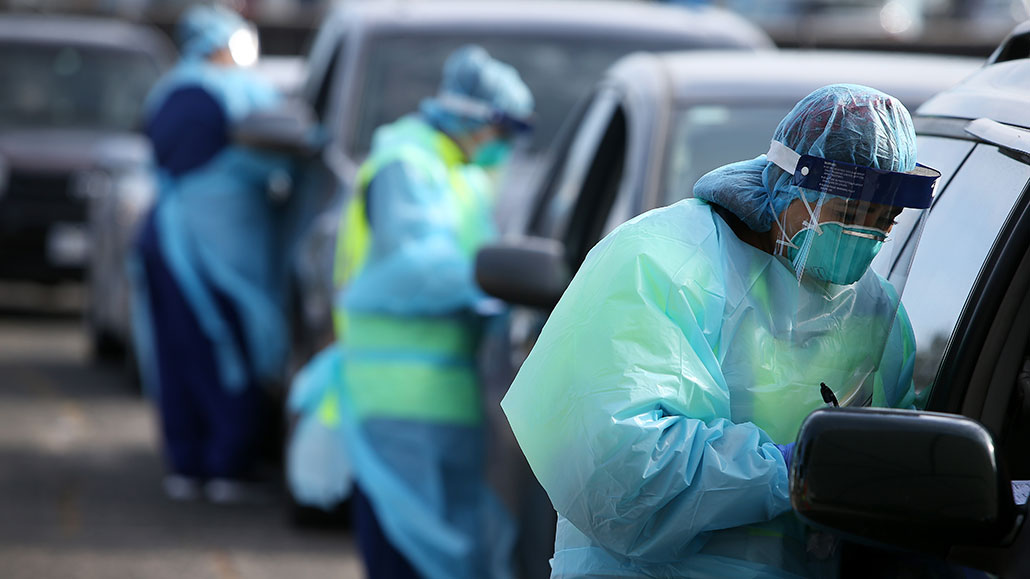Questions for “Super-absorbent swab could curb errors in COVID-19 testing”

Healthcare workers use nasal swabs to conduct COVID-19 testing at a drive-up site. If someone’s result wrongly comes back negative, that person could unknowingly keep spreading the virus.
Lisa Maree Williams/Getty Images News